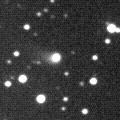
|
It was faint as 16.4 mag at the discovery in March (Mar. 12, R. H. McNaught). Then it brightened well as expected, and became visible visually as 12.2 mag in August (Aug. 3, Juan Jose Gonzalez). Now it is 11.2 mag (Nov. 22, Juan Jose Gonzalez). Strongly condensed and easy to see. It was very small and sharp before, however, the coma is getting larger and it looks like an ordinary comet now. It will reach to 10 mag from January to March. In the Southern Hemisphere, it is observable only until December. In the Northern Hemisphere, the altitude will be getting lower slowly after January, and it will be too low to observe in April.
Date(TT) R.A. (2000) Decl. Delta r Elong. m1 Best Time(A, h)
Dec. 3 20 50.36 -20 58.8 2.211 1.892 58 10.9 18:18 ( 35, 26)
Dec. 10 21 4.27 -19 4.4 2.217 1.839 55 10.8 18:18 ( 40, 25)
|

|
It was expected to reach to 9 mag in 2006 spring. But actually, it is much fainer than expected, 13.9 mag on Aug. 1 and 11.7 mag still on Oct. 27 (Michael Mattiazzo). It seems to be a comet with very slow brightness evolution, similar to C/2003 T4. It will be 11 mag at best. It is not observable until late March in the Northern Hemisphere, but will be observable for a long time while it is getting fainter after that. It will be too low even in the Southern Hemisphere from January to February.
Date(TT) R.A. (2000) Decl. Delta r Elong. m1 Best Time(A, h)
Dec. 3 20 13.24 -69 20.2 2.177 1.838 57 11.5 18:18 ( 15,-19)
Dec. 10 20 11.70 -65 0.5 2.235 1.795 51 11.5 18:18 ( 20,-17)
|

|
It had been so faint as around 15 mag for a long time since May. It had been too faint to see visually. However, after an outburst occured on Sept. 9 when it brightened to 13 mag (Stephane Garro), it keeps bright enough to be visible visually around 13 mag. Very diffuse if not in outburst, but visible visually as 12.8 mag (Oct. 24, Seiichi Yoshida). Another outburst occured on Nov. 2, and it was condensed and bright bright as 12.5 mag (Piotr Guzik).
Date(TT) R.A. (2000) Decl. Delta r Elong. m1 Best Time(A, h)
Dec. 3 1 46.31 22 38.3 4.977 5.774 140 13.2 20:56 ( 0, 78)
Dec. 10 1 44.73 22 19.6 5.053 5.775 133 13.2 20:27 ( 0, 77)
|
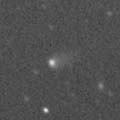
|
It brightened faster than a typical comet, and it is already visible visually as 13.5 mag (Oct. 24, Seiichi Yoshida). Small and strongly condensed. Because it is distant from the sun, it keeps observable at 13.5 mag in good condition for a long time until 2006 June.
Date(TT) R.A. (2000) Decl. Delta r Elong. m1 Best Time(A, h)
Dec. 3 10 6.51 47 56.6 4.845 5.281 111 13.8 5:19 (180, 77)
Dec. 10 10 9.26 48 32.3 4.759 5.272 116 13.7 4:54 (180, 77)
|
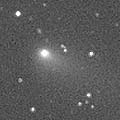
|
Although it was reported so faint as 16-20 mag at the discovery in September, it is actually much brighter, around 14 mag. It was also visible visually as 13.6 mag (Sept. 25, Werner Hasubick). Then it brightened furthermore, 12.6 mag on Nov. 4 (Juan Jose Gonzalez). It keeps observable in good condition until winter. It must have been observable as 14-15 mag in 2004 spring and summer, but it was not discovered at that time. Therefore, now it may be in an unusual temporary outburst. But actually, it keeps bright still in late November.
Date(TT) R.A. (2000) Decl. Delta r Elong. m1 Best Time(A, h)
Dec. 3 1 33.09 25 4.9 2.085 2.893 137 14.0 20:43 ( 0, 80)
Dec. 10 1 32.55 24 29.7 2.177 2.920 131 14.2 20:15 ( 0, 79)
|

|
Although it has already passed the perihelion in 2004 October, the fading after the perihelion passage is slow. It is visible visually still now, bright as 13.1 mag (Oct. 24, Seiichi Yoshida). Moderately condensed and easy to see. Because it is distant from the sun, it can be visible visually as 13 mag for a while after this.
Date(TT) R.A. (2000) Decl. Delta r Elong. m1 Best Time(A, h)
Dec. 3 2 55.36 -12 22.8 4.522 5.291 137 14.1 22:05 ( 0, 43)
Dec. 10 2 48.94 -12 6.5 4.657 5.357 131 14.2 21:31 ( 0, 43)
|
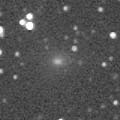
|
It reached to 11.4 mag in August (Aug. 12, Juan Jose Gonzalez). It was expected to start fading since early September. But actually, it keeps bright as 11.8 mag still on Oct. 7 (Juan Jose Gonzalez). Because it had been very low in the morning for a while, it was not observed visually these days. But actually, it was bright as 13.8 mag still on Oct. 31 (Ken-ichi Kadota). It is getting higher gradually now. It will be visible visually around 13.5 mag still now.
Date(TT) R.A. (2000) Decl. Delta r Elong. m1 Best Time(A, h)
Dec. 3 13 19.17 5 10.8 2.309 1.931 55 14.7 5:21 (293, 37)
Dec. 10 13 24.51 3 18.8 2.306 2.010 60 14.8 5:26 (301, 41)
|
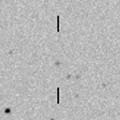
|
Recovery of a peculiar asteroid 2004 FS101 discovered in 2004 spring. Although it was 18 mag in mid January, it has been brightening rather faster than a typical comet, and it reached to 16 mag in early September. It will be 14.5 mag around 2006 January. It keeps observable at 15-16 mag for a long time from 2005 spring to the end of 2006. Because it moves in the northern sky, it keeps observable for a long time in the Northern Hemisphere. However, it will be rather low when the comet becomes brightest. It was not visible visually, fainter than 14.0 mag on Aug. 5 (Seiichi Yoshida), when the altitude was high.
Date(TT) R.A. (2000) Decl. Delta r Elong. m1 Best Time(A, h)
Dec. 3 16 44.78 49 48.9 3.472 3.301 71 14.8 18:18 (136, 23)
Dec. 10 17 5.61 50 25.0 3.430 3.286 73 14.7 5:26 (223, 23)
|
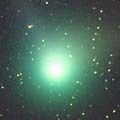
|
It was fantastic, so bright as 3.5 mag, so large as 30 arcmin, locating high overhead at its best time in early January. Then it has been getting fainter and smaller gradually, 12.5 mag on Sept. 3 (Edwin van Dijk) and 13.8 mag on Oct. 19 (Mitsunori Tsumura). It will appear again in the morning sky at 15 mag in December, then it keeps observable using CCD cameras until next summer.
Date(TT) R.A. (2000) Decl. Delta r Elong. m1 Best Time(A, h)
Dec. 3 16 3.55 1 13.9 5.060 4.184 24 14.7 5:21 (270, 2)
Dec. 10 16 10.19 0 50.0 5.103 4.254 27 14.8 5:26 (274, 7)
|
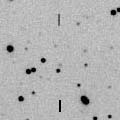
|
Although it was faint as 18 mag at the discovery in 2004 November, then it brightened very rapidly until early 2005, and reached to 16.0 mag on May 7 (Ken-ichi Kadota). After it appeared in the morning sky again, it continued brightening furthermore, and reached to 14.7 mag on Nov. 22 (Ken-ichi Kadota). It will be visible visually around 13.5 mag. After this, it keeps bright as 15 mag for a long time until 2006 spring. In the Northern Hemisphere, it keeps observable in good condition until 2006 summer when it becomes too faint.
Date(TT) R.A. (2000) Decl. Delta r Elong. m1 Best Time(A, h)
Dec. 3 12 52.53 14 17.7 2.717 2.483 65 15.2 5:21 (289, 48)
Dec. 10 13 3.45 13 39.8 2.659 2.500 70 15.3 5:26 (295, 52)
|
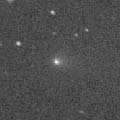
|
It was observed as 17.0 mag on July 10. Then it brightened as expected and reached to 15.0 mag on Oct. 1 (Mitsunori Tsumura). It has shown unstable change of brightness in its past appearance, however, it seems stable in this return. It keeps 15 mag until December. It is also visible visually as 13.5 mag (Oct. 24, Seiichi Yoshida). The second component was found at 18 mag on Nov. 30 about 20 arcmin from the main component.
Date(TT) R.A. (2000) Decl. Delta r Elong. m1 Best Time(A, h)
Dec. 3 0 20.46 -4 46.9 1.807 2.358 111 15.8 19:31 ( 0, 50)
Dec. 10 0 25.86 -3 59.0 1.880 2.354 106 15.8 19:09 ( 0, 51)
|
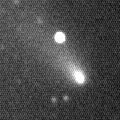
|
Although it became brightest about 2 weeks before the perihelion passage in its last appearance in 1998, it kept brightening until the perihelion passage in this return, and reached to 9.2 mag on July 2 (Carlos Labordena). It is fading rapidly after that, and reached down to 13.2 mag on Oct. 11 (Michael Mattiazzo). It will be fading while locating around 30 degree high after this in the Northern Hesmisphere.
Date(TT) R.A. (2000) Decl. Delta r Elong. m1 Best Time(A, h)
Dec. 3 8 52.85 -25 18.4 1.722 2.154 101 16.0 4:06 ( 0, 30)
Dec. 10 8 49.85 -26 28.1 1.717 2.216 107 16.3 3:35 ( 0, 29)
|
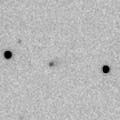
|
It brightened faster than a typical comet, and it reached to 16.5 mag on Oct. 23 (Ken-ichi Kadota). It will be observable in good condition as 16 mag for a long time until next spring.
Date(TT) R.A. (2000) Decl. Delta r Elong. m1 Best Time(A, h)
Dec. 3 10 40.44 58 36.1 4.606 5.004 108 16.1 5:21 (190, 66)
Dec. 10 10 46.28 59 29.4 4.541 4.998 112 16.1 5:26 (182, 66)
|
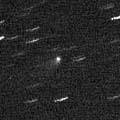
|
It was visible visually as 14.3 mag in 2005 spring (July 10, Edwin van Dijk). Although it has been not observable for a while, now it is appearing in the morning sky again. It will be observable in good condition again in 2006 spring, but only 16 mag at best. Then it will fade out rapidly, and become fainter than 18 mag in July.
Date(TT) R.A. (2000) Decl. Delta r Elong. m1 Best Time(A, h)
Dec. 3 14 0.66 5 55.4 4.270 3.675 47 16.3 5:21 (284, 29)
Dec. 10 14 0.51 6 3.0 4.190 3.700 54 16.3 5:26 (290, 36)
|
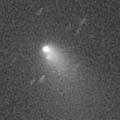
|
It passed the perihelion on Apr. 10 and reached to 8 mag in the southern sky. The nucleus was split into two components and it had a broad long dust tail. Then it had been fading slowly, and it was visible visually still on Oct. 25 as 13.5 mag (Seiichi Yoshida). However, it is fading rapidly now. The component B has been already fainter than 18 mag. The component A is already faint as 16 mag.
Date(TT) R.A. (2000) Decl. Delta r Elong. m1 Best Time(A, h)
Dec. 3 22 16.86 23 45.8 3.311 3.526 94 16.5 18:18 ( 47, 74)
Dec. 10 22 19.10 23 38.4 3.488 3.604 88 16.7 18:18 ( 61, 70)
|
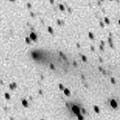
|
It was 16.8 mag at the discovery in May (May 20, R. H. McNaught). Then it brightened rapidly, and became visible visually as 13.7 mag (Sept. 3, Edwin van Dijk). Because it moves in the northern sky, it keeps locating high for a long time in the Northern Hemisphere. However, it will fade out rapidly after this, and will be fainter than 18 mag in early January.
Date(TT) R.A. (2000) Decl. Delta r Elong. m1 Best Time(A, h)
Dec. 3 4 19.24 52 39.1 0.999 1.913 149 16.6 23:28 (180, 72)
Dec. 10 4 11.08 51 52.2 1.044 1.955 149 16.9 22:53 (180, 73)
|
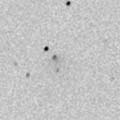
|
It passes the perihelion in 2006 February. But it is outside of Jupiter's orbit. So it keeps 17 mag for a long time. Because it moves in the northern sky, it keeps locating high and observable in good condition until 2006 summer.
Date(TT) R.A. (2000) Decl. Delta r Elong. m1 Best Time(A, h)
Dec. 3 14 54.71 64 33.0 6.758 6.810 88 16.7 5:21 (212, 39)
Dec. 10 15 1.91 64 27.1 6.724 6.807 90 16.7 5:26 (212, 42)
|
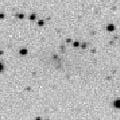
|
It was 13.6 mag on May 12, as bright as expected (Michael Mattiazzo). After that, no successful observations were reported for a while even when the comet became locating high also in the Northern Hemisphere. Actually, it was 17.1 mag on Sept. 3 (Ken-ichi Kadota). It seems the comet faded faster than expected. But it will keep 17 mag for a while.
Date(TT) R.A. (2000) Decl. Delta r Elong. m1 Best Time(A, h)
Dec. 3 4 45.50 8 53.3 1.925 2.893 166 16.9 23:55 ( 0, 64)
Dec. 10 4 38.18 9 2.6 1.971 2.931 164 17.1 23:20 ( 0, 64)
|

|
Although it was so faint as 18.5 mag at the discovery in September, it brightened rapidly. It reached to 16.4 mag on Nov. 27 (Yuji Ohshima). It will be observable around 17 mag until March.
Date(TT) R.A. (2000) Decl. Delta r Elong. m1 Best Time(A, h)
Dec. 3 4 22.39 20 5.2 4.253 5.237 176 17.0 23:31 ( 0, 75)
Dec. 10 4 11.36 19 55.0 4.268 5.230 166 17.0 22:53 ( 0, 75)
|

|
It reached to 17 mag in 2004 autumn. It will be observable as 17 mag in good condition in this winter again.
Date(TT) R.A. (2000) Decl. Delta r Elong. m1 Best Time(A, h)
Dec. 3 7 54.81 16 19.3 2.451 3.207 133 17.0 3:08 ( 0, 71)
Dec. 10 7 52.69 16 10.5 2.396 3.218 140 17.0 2:38 ( 0, 71)
|
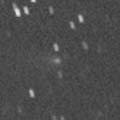
|
First return of a new periodic comet discovered in 1998. The condition is very good and it became brighter in this appearance than at the discovery. It was recovered in July at 19.5 mag, then it brightened as expected, and reached to 16 mag in September. Now it is fading rapidly, and it will be fainter than 18 mag at the end of 2005.
Date(TT) R.A. (2000) Decl. Delta r Elong. m1 Best Time(A, h)
Dec. 3 22 42.93 12 20.0 0.988 1.466 95 17.1 18:18 ( 15, 67)
Dec. 10 22 58.56 15 21.3 1.048 1.486 93 17.3 18:18 ( 25, 69)
|
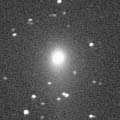
|
It was 17.3 mag on Nov. 1 (Ken-ichi Kadota), fading slowly as expected. It will be fainter than 18 mag in December. It keeps locating high.
Date(TT) R.A. (2000) Decl. Delta r Elong. m1 Best Time(A, h)
Dec. 3 13 19.24 34 44.5 4.588 4.414 73 17.1 5:21 (256, 51)
Dec. 10 13 23.26 34 45.7 4.565 4.472 78 17.2 5:26 (259, 57)
|

|
It was observed around 20 mag in early October, as bright as expected. It will be observable in good condition at around 17 mag from December to March.
Date(TT) R.A. (2000) Decl. Delta r Elong. m1 Best Time(A, h)
Dec. 3 10 20.84 8 16.4 1.366 1.777 96 17.4 5:21 (353, 63)
Dec. 10 10 32.13 6 29.2 1.301 1.771 100 17.3 5:17 ( 0, 61)
|
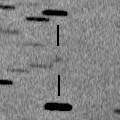
|
It was recovered at 17.3 mag on Sept. 7 (Filip Fratev), as bright as exepcted. It keeps 17.5 mag until December.
Date(TT) R.A. (2000) Decl. Delta r Elong. m1 Best Time(A, h)
Dec. 3 11 19.65 18 25.6 1.691 1.919 87 17.4 5:21 (312, 67)
Dec. 10 11 31.88 18 59.4 1.646 1.947 91 17.4 5:26 (322, 70)
|
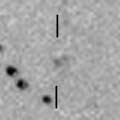
|
It was 16.8 mag on Sept. 9 (Yuji Ohshima). It keeps good condition for a long time. But it will fade out after this, and will be fainter than 18 mag in early January.
Date(TT) R.A. (2000) Decl. Delta r Elong. m1 Best Time(A, h)
Dec. 3 0 49.23 21 29.2 1.364 2.114 127 17.4 20:00 ( 0, 76)
Dec. 10 0 56.77 20 33.3 1.437 2.131 122 17.6 19:40 ( 0, 76)
|
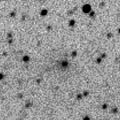
|
It will be at opposition again between autumn and winter, and observable at 17.5 mag locating high.
Date(TT) R.A. (2000) Decl. Delta r Elong. m1 Best Time(A, h)
Dec. 3 3 41.08 17 37.3 3.574 4.537 166 17.4 22:51 ( 0, 73)
Dec. 10 3 36.47 17 31.3 3.618 4.546 157 17.5 22:18 ( 0, 73)
|
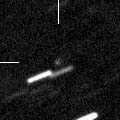
|
The component C was recovered on Oct. 22 as 19.3 mag (C. W. Hergenrother). Then it brightened to 17.8 mag on Nov. 28 ((Ernesto Guido, Giovanni Sostero). It will pass only 0.08 AU from the earth on May 12, and was expected be so bright as 2 mag. Actually, it was fainter than its last appearance by 1.5 mag. Anyway, it will be 3.5 mag at best, and will be visible with naked eyes. It keeps observable in good condition all through the encounter in May. Brightening rapidly, and will be visible visually as 14 mag in late January. The components B (F) and E have not been recovered yet. The component B (F) will reach to 7 mag in May. However, it may be fainter than its last appearance as the component C. The component E may have already disappeared because it faded before the perihelion passage in its last appearance in 2001.
Date(TT) R.A. (2000) Decl. Delta r Elong. m1 Best Time(A, h)
Dec. 3 11 53.45 12 53.9 2.413 2.405 77 17.8 5:21 (307, 58)
Dec. 10 12 3.67 12 19.4 2.268 2.347 82 17.4 5:26 (316, 61)
|

|
New comet. Although it was announced so faint as 19 mag, it is actually much brighter, 17.1 mag on Nov. 27 (Yuji Ohshima). However, it will be fainer than 18 mag in January.
Date(TT) R.A. (2000) Decl. Delta r Elong. m1 Best Time(A, h)
Dec. 3 1 56.68 15 52.2 2.013 2.853 141 17.6 21:07 ( 0, 71)
Dec. 10 1 56.04 15 35.6 2.072 2.849 134 17.6 20:39 ( 0, 71)
|

|
It was expected to reach to 13 mag in 2005 spring at the perihelion passage. However, the brightness evolution was very slow actually and it was only 14.5 mag at best. Now it is getting higher again in the morning. The fading is very slow, too. The current distance is almost same as that at the discovery, and the brightness faded to 17.9 mag, as bright as at the discovery (Nov. 3, Ken-ichi Kadota).
Date(TT) R.A. (2000) Decl. Delta r Elong. m1 Best Time(A, h)
Dec. 3 7 25.45 6 3.1 2.692 3.473 136 17.6 2:39 ( 0, 61)
Dec. 10 7 10.50 6 36.2 2.670 3.531 146 17.6 1:57 ( 0, 62)
|

|
New faint comet. It will be only 18 mag at best in December and January. However, Yuji Ohshima reported it was bright as 16.5 mag on Nov. 27, much brighter than this ephemeris.
Date(TT) R.A. (2000) Decl. Delta r Elong. m1 Best Time(A, h)
Dec. 3 3 40.08 35 34.2 2.522 3.472 161 17.7 22:50 (180, 89)
Dec. 10 3 36.53 35 16.9 2.529 3.455 156 17.7 22:19 (180, 90)
|
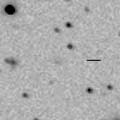
|
It reaches only to 17.5 mag at best in January and February. It will be getting lower in the evening sky.
Date(TT) R.A. (2000) Decl. Delta r Elong. m1 Best Time(A, h)
Dec. 3 22 39.92 -9 28.1 1.830 2.035 87 17.8 18:18 ( 9, 45)
Dec. 10 22 50.87 -8 39.5 1.886 2.016 82 17.7 18:18 ( 15, 45)
|
|
![]()
 119P/Parker-Hartley
119P/Parker-Hartley 168P/2005 N2 ( Hergenrother )
168P/2005 N2 ( Hergenrother ) C/2004 Q1 ( Tucker )
C/2004 Q1 ( Tucker ) 60P/Tsuchinshan 2
60P/Tsuchinshan 2 171P/2005 R3 ( Spahr )
171P/2005 R3 ( Spahr ) P/2005 R1 ( NEAT )
P/2005 R1 ( NEAT ) 65P/Gunn
65P/Gunn 73P/Schwassmann-Wachmann 3
73P/Schwassmann-Wachmann 3 P/2005 S3 ( Read )
P/2005 S3 ( Read ) C/2004 L1 ( LINEAR )
C/2004 L1 ( LINEAR ) C/2005 W2 ( Christensen )
C/2005 W2 ( Christensen ) 132P/Helin-Roman-Alu 2
132P/Helin-Roman-Alu 2![]()


























